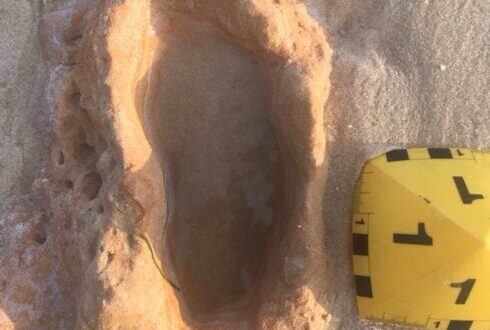It is one of Costa de la Luz’s most popular and famous beaches
The kilometres-long white sandy beaches are a magnet for families who bring their children to enjoy a day at the beach.
But it would seem that there is nothing new in this – proof has been discovered that Neanderthal man did just the same thing 150,000 years ago.
Fossilised footprints from what appears to be a family group – young children included – have been found that scientists believe show the youngsters skipping around – as if at play around a lagoon.
The discovery was made accidentally. Two biologists from the nearby Doñana national park – Dolores Cobo and Ana Mateos – were taking a stroll along the Matalascañas beach in 2021 when they came across a section of beach in front of the Asperillo Cliff that had been washed away by winter storms.

Revealed were numerous footprints made by deer, wild boar and dogs – but most importantly numerous examples from hominids.
Since then a team of researchers from the University of Huelva who came to study the site have identified them as Neanderthal footprints – the oldest ever found in the world.
In addition to studying the shape of the feet of the Neanderthals who made them, they have been able to establish the biological and social characteristics of the group that set foot on the beach of Matalascañas millennia ago.
Researchers at the University of Huelva think the footprints are the work of nine adults, fifteen adolescents and seven children.
The presence of women and children indicates that the lagoon has long disappeared and could have been used as a playground by the younger members of the group. In addition, the abundance of mammal species and its proximity to the coastline made it an ideal place for hunting and fisheries.
READ MORE Southern Spain’s most picturesque coastline is light, breezy, and ideal for walking, dining, and watersports.
The Olive Press has more La Cultura News. Click here to read it.
 Costa News Spain Breaking News | English News in Spain.
Costa News Spain Breaking News | English News in Spain.





